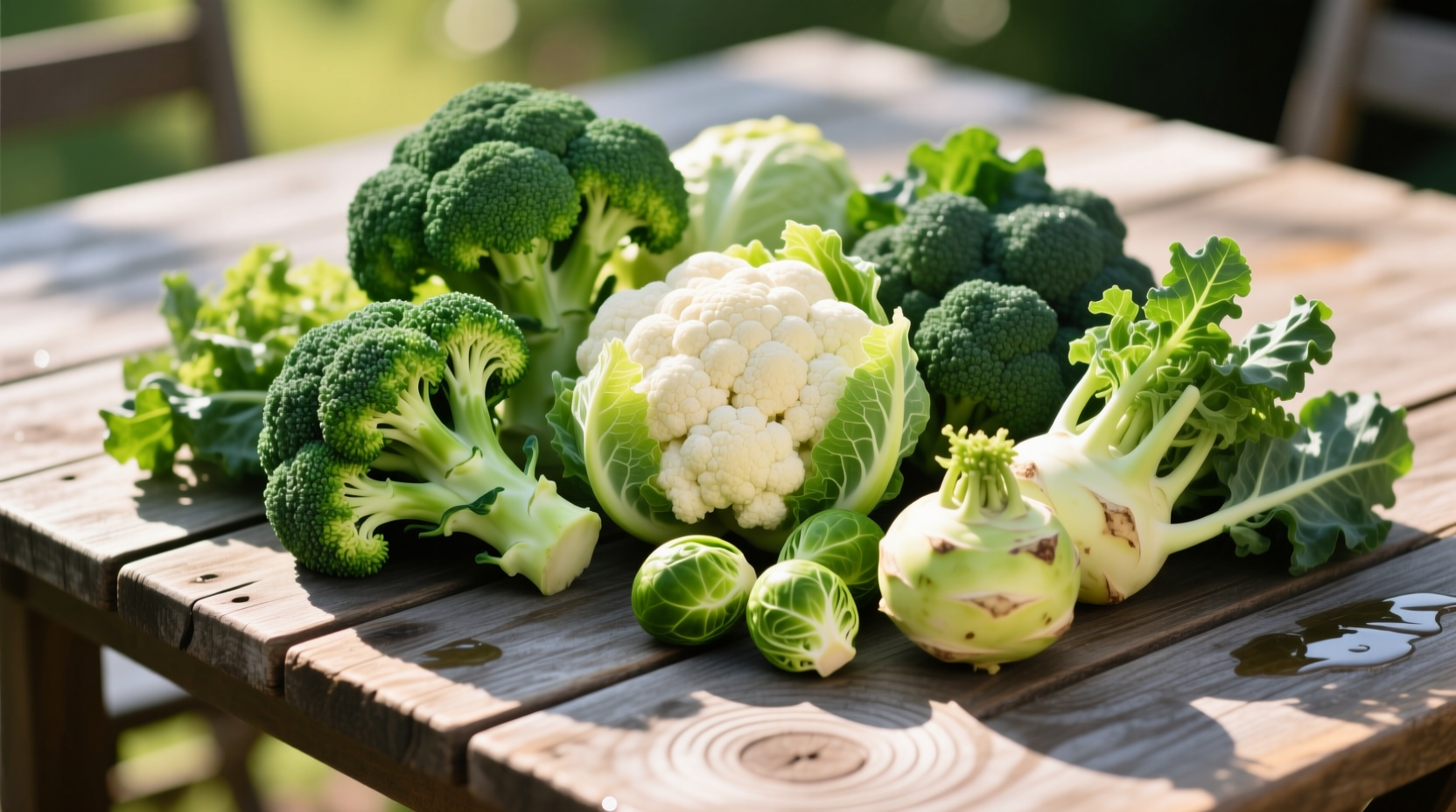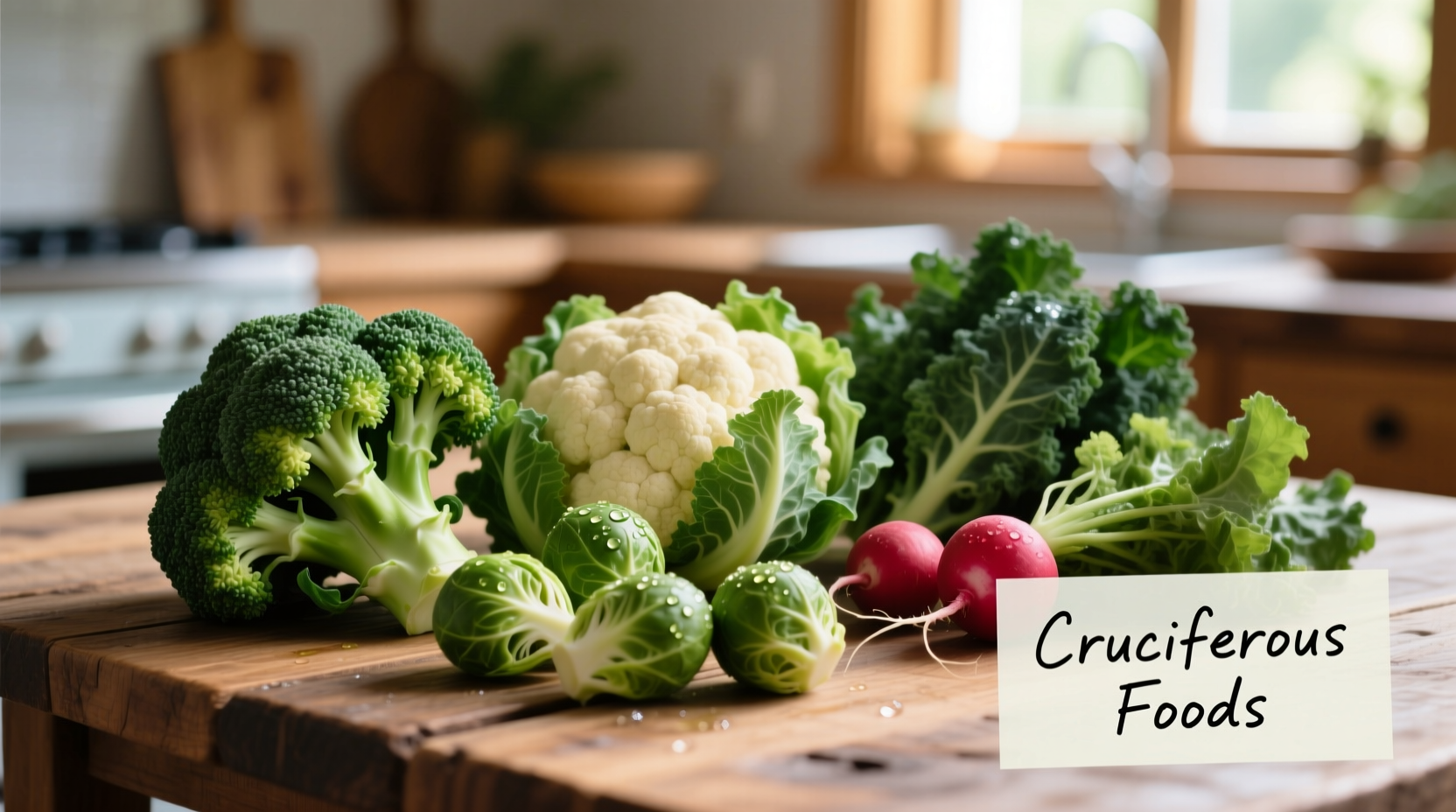Ever wondered why nutritionists constantly praise broccoli and kale? These powerhouse vegetables belong to the cruciferous family, nature’s original superfoods with scientifically proven health benefits. Understanding what makes these vegetables special—and how to maximize their benefits—can transform your approach to healthy eating.
What Exactly Defines a Cruciferous Vegetable?
Cruciferous vegetables share two defining characteristics: their four-petaled flowers that form a cross shape, and their unique sulfur-containing compounds called glucosinolates. When you chop, chew, or digest these vegetables, an enzyme called myrosinase converts glucosinolates into biologically active compounds like sulforaphane and indole-3-carbinol.
These phytochemicals are responsible for cruciferous vegetables’ distinctive aroma and slightly bitter taste, but more importantly, they’re the source of their remarkable health properties. The National Cancer Institute confirms these compounds influence cellular detoxification pathways and may help protect against DNA damage.

Everyday Cruciferous Vegetables You Should Know
While broccoli often steals the spotlight, the cruciferous family includes dozens of common vegetables. Here’s what you’ll find at your local market:
| Common Name | Scientific Name | Seasonal Peak | Distinctive Feature |
|---|---|---|---|
| Broccoli | Brassica oleracea italica | October-March | Tree-like florets with edible stems |
| Kale | Brassica oleracea acephala | Winter | Cold-hardy with ruffled leaves |
| Brussels Sprouts | Brassica oleracea gemmifera | September-January | Mini-cabbage growth pattern |
| Cauliflower | Brassica oleracea botrytis | Year-round | Edible flower head (curd) |
| Bok Choy | Brassica rapa subsp. chinensis | Spring-Fall | White stalks with dark green leaves |
Nutritional Powerhouse: What Makes Cruciferous Vegetables Special
What sets cruciferous vegetables apart isn’t just their unique compounds, but their exceptional nutrient density. According to USDA FoodData Central, a single cup of cooked broccoli delivers:
- 135% of your daily vitamin C needs
- 116% of vitamin K
- 27% of folate
- 8 grams of fiber
- Only 55 calories
Harvard T.H. Chan School of Public Health notes that cruciferous vegetables contain significantly higher levels of certain antioxidants compared to other vegetable families. Their sulfur compounds activate the body’s natural detoxification enzymes, particularly in the liver, helping eliminate harmful substances more efficiently.
Science-Backed Health Benefits You Can’t Ignore
Decades of research reveal why these vegetables deserve a permanent spot on your plate:
Cancer Risk Reduction
A comprehensive 2020 review published in Nutrients analyzed 35 studies and found that regular cruciferous vegetable consumption correlated with a 15-20% lower risk of several cancers, particularly lung, colorectal, and prostate cancers. The active compounds help regulate cell growth and promote apoptosis (programmed cell death) in abnormal cells.
Heart Health Protection
The American Heart Association highlights cruciferous vegetables’ role in cardiovascular protection. Their high potassium content helps regulate blood pressure, while the fiber binds to cholesterol in the digestive system, preventing absorption. A 10-year study tracking 500,000 adults found those consuming 3+ servings weekly had 16% lower risk of heart disease.
Detoxification Support
Cruciferous vegetables uniquely enhance Phase II liver detoxification through compounds like sulforaphane. Research from Johns Hopkins University shows these vegetables increase production of glutathione, the body’s master antioxidant, by up to 30% when consumed regularly.
Maximizing Benefits: How to Prepare Cruciferous Vegetables Right
How you prepare these vegetables dramatically affects their nutritional value. Here’s what the research shows:
The Perfect Timing for Maximum Nutrients
Studies from the Journal of Agricultural and Food Chemistry reveal that chopping cruciferous vegetables and waiting 40 minutes before cooking allows maximum myrosinase enzyme activity, boosting sulforaphane formation by 300%. This simple technique makes your broccoli significantly more potent.
Cooking Methods That Preserve Benefits
Contrary to popular belief, some cooking actually enhances certain nutrients. Steaming for 3-4 minutes preserves glucosinolates better than boiling, while roasting at high heat (400°F) for 20 minutes increases antioxidant availability. The key is avoiding prolonged boiling, which leaches water-soluble compounds.
Flavor Pairing for Better Absorption
Pairing cruciferous vegetables with healthy fats (like olive oil or avocado) increases absorption of fat-soluble vitamins. Adding mustard seed powder (which contains active myrosinase) to cooked cruciferous vegetables can boost sulforaphane formation by up to 43%, according to research from the University of Illinois.
Addressing Common Concerns
Thyroid Considerations
Cruciferous vegetables contain goitrogens, compounds that may interfere with thyroid function in extremely large quantities. However, the National Institutes of Health confirms that normal dietary consumption poses no risk for individuals with healthy thyroid function. Those with existing thyroid conditions should aim for moderate portions (1-2 cups daily) and ensure adequate iodine intake from other sources.
Digestive Comfort Strategies
Some people experience gas or bloating from cruciferous vegetables due to their raffinose content. Start with smaller portions (1/2 cup) and gradually increase as your gut adapts. Cooking methods like steaming or roasting make these vegetables easier to digest than raw consumption. Adding digestive herbs like ginger or fennel during preparation can further reduce discomfort.
Your 7-Day Cruciferous Vegetable Action Plan
Ready to harness these benefits? Follow this practical implementation strategy:
- Monday: Add 1/2 cup chopped broccoli to your omelet (wait 40 minutes after chopping)
- Tuesday: Roast Brussels sprouts with olive oil and mustard seeds
- Wednesday: Blend kale into smoothies (massage leaves first with lemon juice)
- Thursday: Stir-fry bok choy with garlic and sesame oil
- Friday: Make cauliflower rice as a grain substitute
- Saturday: Prepare raw cabbage slaw with apple cider vinegar
- Sunday: Try roasted Romanesco with turmeric and black pepper
For optimal benefits, aim for 1.5-2 cups of cruciferous vegetables daily. The USDA Dietary Guidelines recommend filling half your plate with vegetables at meals, with cruciferous varieties making up a significant portion.
How much cruciferous vegetables should I eat daily for health benefits?
Research suggests consuming 1.5-2 cups of cruciferous vegetables daily provides optimal health benefits. This amount delivers sufficient glucosinolates without overwhelming your system. Start with smaller portions if you're new to these vegetables and gradually increase as your digestive system adapts.
Are cooked cruciferous vegetables still nutritious?
Yes, properly cooked cruciferous vegetables retain most nutrients. Steaming for 3-4 minutes preserves glucosinolates better than boiling, while roasting enhances certain antioxidants. The key is avoiding prolonged boiling, which leaches water-soluble compounds. Chopping and waiting 40 minutes before cooking actually increases beneficial compound formation.
Can cruciferous vegetables affect thyroid function?
Normal dietary consumption of cruciferous vegetables poses no risk for individuals with healthy thyroid function, according to the National Institutes of Health. Those with existing thyroid conditions should consume moderate portions (1-2 cups daily) and ensure adequate iodine intake from other sources like seafood or iodized salt.
Why do cruciferous vegetables cause gas for some people?
Cruciferous vegetables contain raffinose, a complex sugar that humans lack the enzyme to break down completely. Gut bacteria ferment this fiber, producing gas. Start with smaller portions (1/2 cup) and gradually increase as your gut adapts. Cooking methods like steaming or roasting make these vegetables easier to digest than raw consumption.











 浙公网安备
33010002000092号
浙公网安备
33010002000092号 浙B2-20120091-4
浙B2-20120091-4